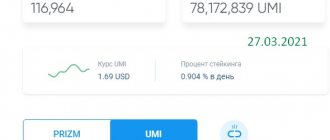Bitcoin, as the first widely known cryptocurrency, immediately took its place as a leader in the industry. A number of technological solutions applied in it, such as the use of blockchain technology, distributed structure and anonymity, became the main principles for other coins, which were called alternative cryptocurrencies or altcoins.
How to make money on altcoins, a list of the most promising coins of 2021 and other important information further in our article.
- What are altcoins
- Types of altcoins Unique altcoins
- Stablecoins
- Anonymous altcoins
- Earning altcoins without investments Airdrop
- USD Coin (USDC)
Altcoins in cryptocurrency
Altcoin
is an alternative cryptocurrency to Bitcoin. Altcoins are purchased on exchanges and exchangers. It is best to buy on cryptocurrency exchanges (for example, Bittrex or Exmo), because exchangers do not support many currencies.
As you know, the first cryptocurrency was Bitcoin. It was founded in 2008 by the mysterious person Satoshi Nakamoto. From this moment the history of cryptocurrencies begins. Bitcoin has long remained unique in its kind. But as time passed, crypto enthusiasts learned more about the specifics of cryptography and blockchain technology.
A few years later, forks and hard forks began to appear, based on the Bitcoin source code with certain changes. This is how new cryptocurrencies, alternative to Bitcoin, altcoins, were born.
This generalized name subsequently caught on and is now used in relation to almost all cryptocurrencies except Bitcoin. Bitcoin is traditionally considered the first and main coin. All others are its alternative.
Thus, an altcoin is any digital asset, a token that is either created from scratch, or is a fork or hard fork of some cryptocurrency. In particular, Bitcoin.
However, we personally like to use the term “Altcoin” in relation to all cryptocurrencies that, in principle, have nothing to do with Bitcoin. All cryptoassets derived from Bitcoin are forks and hardforks. For example, Bitcoin Cash, Bitcoin Gold and even Litecoin.
It’s difficult to call them altcoins, since although they constitute an alternative to real Bitcoin, they are still based on this cryptocurrency. While an altcoin, in our understanding, is something completely new. For example, Ethereum, Ripple, Monero, EOS and others. Those cryptocurrencies that use their own unique blockchain and do not copy the ideas of true Bitcoin.
But we cannot beg the world, and in this sense this term is rarely used.
The most correct definition:
Altcoin is any cryptocurrency other than Bitcoin.
Altcoins: list of TOP coins
List of altcoins
List of altcoins from the TOP-20:
- Ethereum
is the TOP-2 cryptocurrency by capitalization after Bitcoin, the leading ecosystem for launching smart contracts and dApps; - Binance Coin
is the native cryptocurrency of the exchange of the same name; - Cardano
is the leading cryptocurrency in building blockchain 3.0, an ecosystem for launching smart contracts; - XRP
is a means of payment aimed at use in the banking sector; - Dogecoin
is a meme cryptocurrency whose main purpose is as a means of payment, supported by Elon Musk; - Polkadot
is a technology aimed at creating “bridges” between different blockchains; - Uniswap
is the most famous decentralized cryptocurrency exchange (DEX); - Bitcoin Cash
is a means of payment, a fork of Bitcoin; - Litecoin
is a means of payment, a fork of Bitcoin; - Solana
- a scalable, high-throughput blockchain for running dApps; - Chainlink
is an oracle network that allows you to upload any information to the blockchain; - Wrapped Bitcoin
- ERC-20 token backed by Bitcoin; - Polygon
- a network for scaling the Ethereum blockchain; - THETA
is a streaming platform that operates on blockchain technology; - Ethereum Classic
is a coin that appeared as a result of the Ethereum hard fork; - Stellar
is a fork of the XRP cryptocurrency.
Types of altcoins and mining methods
In addition to the standard division into similar BTC and unique projects, there are several other classifications of altcoins:
- If possible, mining;
- Based on the availability of collateral;
- According to the purpose of use;
- According to the level of anonymity;
- By limiting emissions.
All altcoins can be divided into groups according to their hashing algorithm and the method of protecting the network. Blockchain engineers have developed dozens of hash algorithms, the most common are:
- SHA-256;
- Ethash;
- Scrypt;
- Equihash;
- CryptoNight;
- X11;
- X17/X15/X13/X21S;
- X16Rv2/X16R;
- Neoscrypt;
- Lyra2REv2;
- Blake256/Blake2S/Kessak.
The vast majority of altcoins are based on these cryptographic hash functions.
According to the method of protecting the network, or, to put it another way, according to the consensus algorithm, alcoins are divided into those operating on Proof-of-work (PoW) and Proof-of-Stake (PoS)
.
In networks that use a proof-of-work algorithm, miners are responsible for verifying transactions and creating new blocks. This is the name given to the owners of computing power involved in a process called mining. They sell the altcoin earned through the mining process on exchanges or put it aside for the long term in anticipation of the rate taking off. Miners are constantly looking for promising altcoins to make money; most popular crypto networks cannot do without their participation.
Systems running on a proof-of-stake (PoS) algorithm delegate the authority to verify transactions and create new blocks to validators
. To become a validator, you must have a certain number of network tokens in your wallet and install a special program on your PC. In some cryptosystems, validators are elected by popular vote or appointed by the project administration.
Some crypto networks use other security algorithms, which are essentially modifications of Proof-of-Stake, or integrate both methods of reaching consensus simultaneously.
The emission of tokens and the release method depend on the program code of the cryptocurrency. For example, in the second most powerful blockchain ecosystem after Bitcoin, Ethereum, there is no limit on the maximum number of coins issued. In many other systems, the number of coins is limited. At the same time, they can either be mined gradually during the process of PoW or PoS mining, or be issued at once when the network is launched. In this case, the reward for generating blocks and processing transactions is paid exclusively from commissions for payment transactions.
Altcoins that can be mined
Mining
— the process of mining coins. Computer resources (video cards, processors or special devices) are used to calculate large blocks of data. As a result of the operation of computers, transactions are confirmed or the terms of contracts are verified. For his work, the miner receives a reward in the form of digital coins.
The meaning of mining
- balance the system. Miners are rewarded for using their computing power to mine new coins, allowing the network to continue to operate efficiently.
To increase the likelihood of receiving a reward, several miners join into pools. With shared resources, they have a better chance of being rewarded. Upon receipt of the award, it is distributed among all participants in proportion to their contribution to the common cause.
Altcoins that can be mined most often use the BTC (Bitcoin) or ETH (Ethereum) structure as their base.
Top 5 largest altcoins that can be mined:
- Litecoin;
- Ethereum;
- Dogecoin;
- Bitcoin Gold;
- ZCash.
Stablecoins
Stablecoins
- a cryptocurrency that is backed by a physical object.
The following may serve as collateral:
- fiat money (dollar, euro, pounds, Australian dollars);
- physical goods (oil);
- precious metals (gold).
The coin rate is tied to the value of the secured asset. This allows you to significantly reduce volatility (rate fluctuations). The rate is adjusted in cases where the secured asset changes value, which makes the cryptocurrency more reliable.
Traditional cryptocurrencies have been confirmed to experience strong fluctuations. Within one day, the BTC rate can change by tens of percent. The price of alts changes even more. Linking to a real object eliminates fluctuations, but provokes another problem - decentralization.
Cryptocurrency was originally conceived as a decentralized system, where each user has the same rights. Collateralized coins are completely contrary to the idea of decentralization. The coins themselves remain entirely under the control of the users, but the collateral, and therefore the exchange rate, is in the hands of the company.
A stable asset turns into an analogue of fiat money. Instead of the Central Bank there is a development company, instead of currency there is a coin. A company can sell collateral without confirmation, even if it has entered into a contract for it.
Many developers use interesting mechanics: their main cryptocurrency is not backed by anything, but there is an investment analogue, the rate of which is tied to a real asset. In this case, a stablecoin is nothing more than PR.
Security Tokens
Security tokens
— coins equivalent to securities.
Such tokens are analogues of shares and bonds and give the investor the right to receive dividends and bonuses. Investors take advantage of this or wait until it goes public and successfully resell the coin.
Security Tokens have emerged as an alternative to Utility Tokens and StableCoins. They provide a guarantee to investors who are interested in resale of assets after going public. If the development company cannot bring the project to sale, then you can get an alternative - securities.
Security Token is a more reliable financial asset. From a legal point of view, an investor who owns such a token has more rights and grounds for compensation.
At the ICO stage, investors prefer to receive a Security Token in order to guarantee themselves a partial refund in case of project failure.
Utility Tokens
Utility or usable token
— an internal coin that is used within the service.
The Utility Token implementation scheme is as follows: developers announce the start of raising funds -> investors invest money -> they receive a Utility Token in proportion to the invested capital. Some of the tokens used remain with the company.
Coins can be spent when the project starts working. The list of services provided by developers is indicated in the project documentation. This way, investors can imagine what they are paying money for and what functionality they will get for it.
Unlike Security Tokens, tokens used are most often intended for internal use. They are not backed by anything and serve as a settlement currency within the company. You can get a package of services with them. When entering the stock exchange, they can also be implemented, but this is a secondary factor.
Entering the exchange, in the case of Utility Token, is optional. If such a goal is stated, the developer will strive for it. If this is a project for internal use, you can only spend coins in the system.
An example of using Utility Token is Ripple, a service for making interbank payments without intermediaries. For a certain amount of Ripple, you can make transactions between banks. Utility Token in this case is the ability to use the company’s product.
Pavel Durov, during a recent fundraising for cryptocurrency for his messenger, wanted to implement a similar scheme. But the idea failed due to difficulties with US legislative bodies.
For the average user, Utility Token is a type of lottery ticket. If there is no need for the project’s services, then you need to wait for it to go public, which may not happen. Statistics do not speak in favor of the end user - out of 500 projects, only the top 100 are traded stably and only the top 50 have good liquidity indicators.
Anonymous tokens
The issue of token anonymity began to be raised during the period of Bitcoin’s popularity. Then they began to say in the community that, if desired, it was possible to find all transactions made from a specific wallet, and, if necessary, obtain all information about the user.
To improve anonymity, several altcoins with multi-level protection were created. The system itself is completely hack-proof, and if hackers can gain access to the databases, they still won’t know anything - the servers don’t store any information. For the user, such altcoins provide additional means of anonymity on the Internet.
The most popular anonymous altcoins are Monero, ZCash, Dash.
Top cryptocurrencies on Binance
With a small budget, it is useless to play on the rise and fall of large coins: it is more liquid to take actively growing altcoins (new projects) and invest in them.
List of growing currencies on Binance
It is important to find an inexpensive currency at the beginning of its growth: this way you can invest as profitably as possible.
LAZIO
A promising growth leader is the cryptocurrency of the Lazio football club. After being listed on the Binance exchange on October 21, its price increased by more than 2300%, that is, thousands of times.
This is a fan token issued under an agreement between Binance and FC. This stunning success is due to the terms of the contract (30 million euros for two years) and the interest of the fans. The holder of this crypt gets access to important voting and exclusive prizes.
LAZIO only repeated the history of the PSG token (Paris Saint-German team): after Messi moved to PSG, the growth reached 300% per day, setting a record of $61.23 per token.
FIRO
The altcoin FIRO is also growing: it cannot repeat the pace of Lazio, but after a failure at the beginning of trading it begins to gain momentum (up to 25% per day - see screenshot). I don’t have any big plans for him: he’s unlikely to break through the 30% ceiling.
THORChain
Chart from the crypto exchange
No less active is the currency RUNE (an application development company based on the blockchain network) - after a week-long failure, it reaches an almost peak value of 650 rubles. Buying it now is dangerous: after such a rise there will be a quick decline to a rate of 500 - 550 rubles.
VeChain
Analytics coin VET for the first time in recent months reaches top values: after a strong decrease on August 29, by October 22 it increased 1.5 times: from 6 rubles per token to 9.
This is not the limit and he has all the prospects for increasing capitalization and remuneration, so he is a leader in the top. At the same time, I would not consider it as a main asset: this cryptocurrency is unstable and can become much cheaper in a month.
The remaining currencies are not as promising, but due to the growth rate they are worth mentioning:
- Secret (SCRT) – 500 rubles per coin, increased by 10% on October 25th. I don’t recommend buying it now: it is hitting historical highs and will soon fall significantly in price and the market will fall.
- SSV Network (SSV) is a cryptocurrency listed on October 22. In three days it dropped significantly: from 1254 to 974 rubles. The only coin with growth potential.
- Bread (BRD) – after an unprecedented surge in November, it is gradually growing, reaching 16 rubles. Not the most liquid asset.
- Prosper (PROS) is a low-cost currency participating in the Binance Smart Chain. It is becoming more expensive in spurts: after the last August price has fallen by half: from 323 to 168 rubles.
Which network altcoins to choose for the long term
In the near future, alternative small network altcoins with low capitalization will not break records: all the market attention is focused on the record holder BTC, which has updated its all-time high. The rating in such conditions is extremely inaccurate.
However, this is a good time to buy into established currencies: Solana has lost 7% of its value over the past two weeks and is starting to make a comeback. It's worth purchasing right now.
Don’t get hung up on mining new products: in the near future you can count on user demand for Polkadot and XRP . Due to major innovations, the “Ethereum killer” could grow well. There is an alternative to Bep20.
Top growing cryptocurrencies BSC season summer - winter 2021
Binance Smart Chain is a decentralized exchange for buying and selling digital assets. Cryptocurrencies added to this system do not require long approval. Investors use only smart contracts; they need access through a shared account.
Based on this technology, both reputable currencies (for example, Ripple, Dogecoin, Litecoin) and little-known ones (TUSD, UST, USDT) are distributed. It is now possible to sum up the results of the summer season and determine the most profitable coins in various trading areas, combining them into the top.
Ethereum (ETH)
The second fastest growing cryptocurrency, ahead of only Bitcoin and LTC. Now its price has reached almost a historical maximum; a change in the top values is possible.
Investing with a small budget is useless: the commission (a characteristic feature of Ether is a large fee for transactions) will exceed the margin for small transactions. It is easier for beginners to start with a cheaper crypto.
Binance Coin (BNB)
A coin with an extension of the Binance exchange itself. In terms of market capitalization and trading volume, the instrument is second only to Ethereum.
TOP values
The maximum price has now been set for the last six months of the development strategy. At the same time, positive dynamics are also well observed, and in light of Binance’s participation in large transactions, it will continue to grow.
Cardano (ADA)
Coming from the pen of a former Ethereum developer (ranked top 2 in the world), the cryptocurrency has finally stabilized after a surge at the end of August. Experts also claim that in light of the announcement of major changes in the company itself, the token will grow significantly.
ADA is a stable and moderate investment option. It will not be comparable to Bitcoin, ETH or BNB, but when compared to other altcoins, it does not have sharp price swings.
Actively growing, but not so promising:
- Flux (FLUX) is a coin of a cloud infrastructure company. Now it is rising by an average of 10–15% daily, updating the record price by a third: from 30 to 40 rubles.
- NEAR Protocol (NEAR) – in two weeks it rose by 300 rubles (from 522 to 847). I don’t think there is any prospect beyond this threshold. Investing now, and especially with a view to the long term, will not pay off.
- Harmony (ONE) is an unexpectedly soaring crypt of the Harmony blockchain platform. Price: 23.40₽.
When did altcoins appear?
It is noteworthy that the first altcoins appeared in 2011. As already mentioned, they appeared in the desire of the developers to improve the existing Bitcoin code and remove the restrictions that exist in the main network. Some cryptocurrencies have succeeded, while others are not at the peak of their popularity. Some projects have remained somewhere on the outskirts of the history of cryptocurrencies and exist exclusively in the list of some websites.
But overall, the mission of altcoins was to overcome the limitations and expand the capabilities of the Bitcoin network. And also competition, of course. Bitcoin hegemony is good. But not everyone likes monopoly. Of course, their appearance has significantly spurred the development of the cryptocurrency sector.
Brief history of altcoins:
- Namecoin
. The crypt was created in 2011, approximately 2 years after the launch of Bitcoin, this is the first altcoin in history. The Namecoin project was created to develop a system of alternative DNS servers. The coin “didn’t take off,” but the project is still alive and is in the eighth hundred in the coinmarketcap.com ranking. - Litecoin
, a cryptocurrency also launched in 2011, maintained its status as the second-largest cryptocurrency after Bitcoin for several years. It still remains at the top of the capitalization rating. - PeerCoin
is the third altcoin, appeared at the end of 2012, its peculiarity is that the Proof of Stake consensus algorithm was used. The Peercoin blockchain is not fundamentally different from Bitcoin, and the main feature of this crypt is the unlimited issue of coins. Annual inflation is planned at 1%. The project still exists, however, it has no chance of entering even the TOP50; at the time of preparing the review, the coin is in the 9th hundred of the coinmarketcap.com rating. - Ripple
, a project launched in 2012, is a platform for payment systems. Crypto turned out to be in demand and remains in the TOP10 by capitalization. - Dogecoin
is an altcoin that is primarily remembered for being named after the Doge meme. Despite the seemingly frivolous approach, cryptocurrency turned out to be in demand. It is noteworthy that Dogecoin is based on another cryptocurrency – Luckycoin. As of 2022, the coin is included in the TOP20 rating by capitalization.










